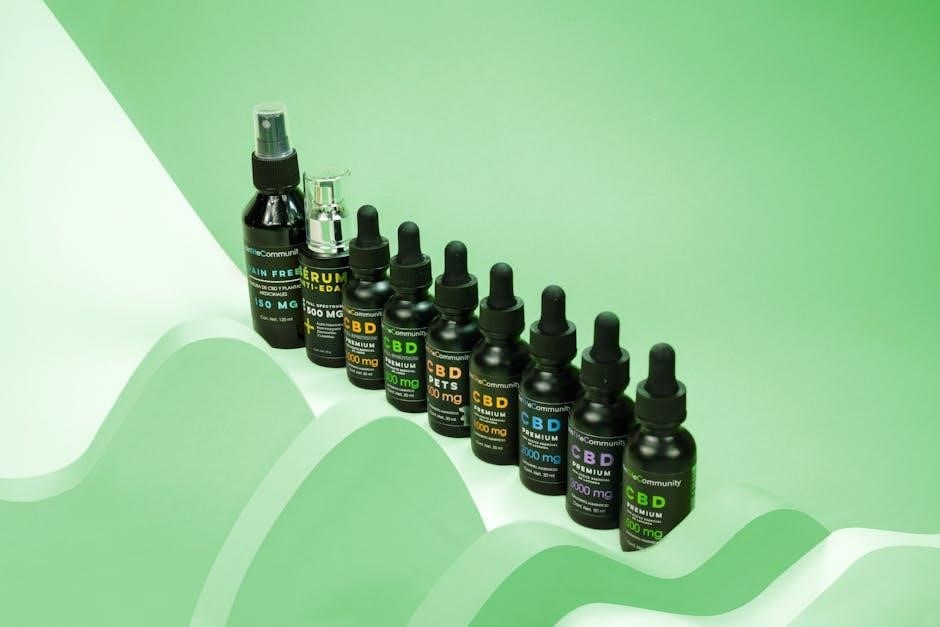Discover the world of card games, from classics like Poker and Blackjack to modern favorites. This guide offers comprehensive rules, strategies, and insights into their cultural significance, perfect for both newcomers and seasoned players alike.
1.1 Overview of Card Games

Card games are a universal form of entertainment, offering endless variety and excitement. From classic favorites like Poker and Blackjack to modern hits like Uno and Exploding Kittens, these games cater to all ages and skill levels. They can be strategy-based, luck-driven, or purely social, making them adaptable to any setting. Whether played casually or competitively, card games foster connection and fun. Their diverse rules and objectives ensure there’s something for everyone, making them a timeless and global phenomenon that continues to evolve and captivate audiences worldwide.
1.2 Importance of Learning Card Game Rules
Learning card game rules is essential for ensuring a smooth and enjoyable experience for all players. Understanding the rules provides a foundation for fair play, preventing disputes and misunderstandings. It also enhances your ability to strategize and improve your skills, making the game more engaging. Whether playing casually or competitively, knowing the rules fosters social bonding and respect among players. Clear rules ensure everyone is on the same page, allowing the game to flow naturally and creating a positive environment for building connections and shared fun.

1.3 Brief History of Card Games
Card games have a rich and fascinating history that spans centuries. Originating in China during the Tang Dynasty (618–907 AD), playing cards were initially used for a game called “The Leaf.” From there, cards spread to Japan and later to Europe through trade routes. The first recorded use of playing cards in Europe dates back to the 14th century. Over time, various cultures adapted and evolved card games, creating iconic games like Poker, Blackjack, and Solitaire. Today, card games remain a beloved global pastime, reflecting both tradition and innovation across generations.
Popular Card Games and Their Rules
Explore iconic card games like Poker, Blackjack, and Solitaire, each offering unique rules and strategies. Discover how to master these classics and enjoy endless entertainment for players of all skill levels.
2.1 Poker: Basic Rules and Variations
Poker is a classic card game blending strategy and luck. Players aim to win chips by having the best hand or making others fold. Basic rules involve dealing cards, betting rounds, and revealing hands. Popular variations include Texas Hold’em, where players use community cards, and Omaha, requiring two hole cards. Seven Card Stud relies solely on individual cards. Understanding hand rankings (e.g., Royal Flush, Straight) and betting options (check, raise, fold) is essential. Each variation offers unique twists, making Poker a versatile and engaging game for players of all skill levels.
2.2 Blackjack: How to Play and Win
Blackjack is a thrilling casino card game where players aim to get a hand value closest to 21 without exceeding it. The game begins with each player receiving two cards, while the dealer gets one face-up card. Players can choose to Hit (take another card), Stand (keep the current hand), or Double Down (double the bet and take one more card). If a player’s initial hand is an Ace and a 10-value card, they achieve Blackjack, an instant win. The dealer must draw until reaching 17 or more. To increase chances of winning, players should avoid busting and strategically manage their bankroll.
2.3 Solitaire: A Guide to Classic and Modern Versions
Solitaire, also known as Klondike Solitaire, is a timeless single-player card game where players aim to move all cards to the foundation piles. The game starts with a shuffled deck, and cards are dealt into seven columns. Players can move cards between columns to create ascending sequences or use free cells for temporary storage. The goal is to sort all cards into four foundation piles by suit and rank. Modern versions, like Spider Solitaire and Freecell, offer new challenges and strategies. With patience and skill, Solitaire remains a beloved pastime for players of all ages.

2;4 Hearts, Spades, and Other Trick-Taking Games
Hearts and Spades are popular trick-taking card games where players aim to avoid or capture specific card values. In Hearts, players try to avoid collecting hearts or the Queen of Spades, while Spades focuses on bidding and capturing tricks. Both games require strategic communication and teamwork. Other trick-taking games, like Bridge and Whist, involve similar mechanics but with varying rules and complexities. These games are beloved for their blend of strategy, social interaction, and competitive fun, making them staples in card game collections worldwide.

Card Game Instructions for Beginners
Welcome to the world of card games! This section provides a comprehensive guide for newcomers, covering essential rules, terminology, and strategies to get you started. Learn the basics, understand common mistakes, and build a strong foundation for enjoying your favorite card games with confidence.
3.1 Essential Card Game Terminology
Mastering card game terminology is crucial for understanding the rules and strategies. Key terms include deck (a set of 52 cards), hand (cards held by a player), trick (a round of cards played), and trump (a suit that outranks others). Terms like rank (card value) and suit (hearts, diamonds, clubs, spades) are fundamental. Understanding actions like deal (distributing cards), draw (taking a card), and discard (removing a card) is essential. Familiarize yourself with these terms to grasp game mechanics and communicate effectively with other players.
3.2 Step-by-Step Guide to Learning Card Games
Start by understanding the deck and basic setup. Learn the rules of the specific game, including the objective, number of players, and card rankings. Practice shuffling and dealing cards to ensure a smooth gameplay experience. Begin with simple games like Go Fish or War to build familiarity. Gradually move to more complex games like Poker or Blackjack, focusing on strategy and terminology. Watch tutorials or play with experienced players to refine your skills. Finally, join casual games to apply your knowledge and improve through hands-on experience.
3.3 Common Mistakes to Avoid
One of the most common mistakes is misunderstanding the basic rules of the game. Always familiarize yourself with the objective, card rankings, and specific gameplay mechanics. Improper shuffling or dealing can lead to unfair gameplay, so ensure cards are well-mixed and distributed correctly. Ignoring opponent behavior or failing to adapt your strategy can hinder success. Avoid playing too aggressively or passively, as this can make you predictable. Lastly, don’t overlook the importance of etiquette, such as keeping cards visible and respecting turn order, to maintain a positive gaming environment.

Advanced Card Game Strategies
Mastering advanced techniques requires refining your skills, understanding game nuances, and adapting strategies. Explore expert-level tactics to enhance your gameplay and outsmart opponents effectively.
4.1 Mastering Poker Strategies
Mastering poker strategies involves a deep understanding of the game’s nuances, including hand rankings, bluffing techniques, and reading opponents. Advanced players focus on position play, bet sizing, and pot odds to maximize their edge. Adaptability is key, as strategies vary between cash games and tournaments. Learning to balance aggression with patience and studying opponent tendencies can significantly improve your gameplay. Additionally, managing your bankroll and maintaining emotional discipline are crucial for long-term success. Continuous learning and practice are essential to stay ahead in this dynamic and competitive card game.
4.2 Winning Tips for Blackjack
Mastering Blackjack requires a combination of strategy and discipline. Start by understanding basic strategy, which dictates the best moves based on your hand and the dealer’s upcard. Avoid insurance bets, as they typically favor the house. Manage your bankroll wisely, setting limits to ensure longevity. Learn to recognize when to hit, stand, double down, or split pairs effectively. Adapt your strategy based on the table’s rules, such as the number of decks and dealer actions. Continuous learning and practice will enhance your decision-making, increasing your chances of success in this iconic card game.
4.3 Advanced Techniques for Solitaire
Take your Solitaire skills to the next level with advanced strategies. Focus on building a strong foundation by prioritizing card placement in ascending order. Use the “four piles” method to organize cards by suit, streamlining your workflow. Always move cards to the foundation as soon as possible to free up space. Utilize free cells strategically to sort and rearrange cards. Avoid unnecessary moves to maintain efficiency. Pay attention to hidden cards in the stockpile, as they can unlock new opportunities. With patience and practice, these techniques will help you solve even the most challenging Solitaire layouts effectively.

Card Games Around the World
Explore the diversity of card games worldwide, reflecting cultural heritage and entertainment. From China to Germany, each region offers unique traditions and modern twists, enjoyed globally.
5.1 Popular Card Games in the United Kingdom
The UK boasts a rich tradition of card games, with favorites like Blackjack, Poker, and regional specialties. Whist and Euchre are timeless classics, often played in pubs and social gatherings. Bridge remains popular among clubs, while Hearts and Spades are enjoyed casually. These games reflect the UK’s cultural heritage, blending strategy and camaraderie. From historic card rooms to modern online platforms, the UK’s love for card games endures, offering entertainment and fostering community bonds across generations.
5.2 Card Games in China: History and Modern Play
China boasts a rich history of card games, with origins dating back centuries. Traditional games like Poker and The Great Wall remain popular, blending cultural heritage with modern twists. These games often combine strategy and luck, reflecting China’s love for intellectual challenges. Modern card games in China have evolved, incorporating new designs and rules while preserving traditional elements. They serve as both entertainment and a means of social bonding, highlighting the enduring appeal of card games in Chinese culture and their adaptation to contemporary tastes.

5;3 Card Games in Germany: Skat and Beyond
Germany is renowned for its rich card game culture, with Skat being the national favorite. This trick-taking game, played with a standard deck, is a staple in cafes and social gatherings. Beyond Skat, games like Schafkopf and Doppelkopf are widely popular, offering unique rules and strategies. These games reflect Germany’s love for intellectual challenges and social interaction. From casual play to competitive tournaments, card games in Germany are deeply ingrained in the culture, fostering community bonds and providing endless entertainment for players of all ages.
5.4 Card Games in Other Regions
Card games are a global phenomenon, with diverse variations across regions. In the Middle East, Treasure is a popular trick-taking game, while India boasts Rummy as a cultural staple. The Caribbean is home to Calypso, a fast-paced game blending strategy and luck. Each region’s card games reflect local history, traditions, and social values, serving as a bridge between generations. From casual family gatherings to competitive tournaments, these games foster community bonds and provide endless entertainment, showcasing the universal appeal of card games as a shared human experience.

Card Game Tournaments and Competitions
Card game tournaments offer thrilling competition, from the World Series of Poker to Blackjack events. These competitions require skill, strategy, and precision, providing prestige and rewards for participants worldwide.
6.1 How to Participate in Card Game Tournaments
Participating in card game tournaments involves researching events, understanding rules, and registering. Start by choosing a tournament that matches your skill level and game preference. Many events, like the World Series of Poker or Blackjack championships, require registration online or in-person. Ensure you meet eligibility criteria, such as age or entry fees. Practice beforehand to refine your strategies and stay updated on tournament formats. Joining online platforms or local card clubs can also provide opportunities to compete. Whether you’re a novice or an expert, participating in tournaments offers a chance to test your skills and connect with fellow players globally.
6.2 Rules for Competitive Play
Competitive card games require adherence to official rules and proper conduct. Players must ensure decks are standardized and shuffled fairly. In tournaments, actions like betting or discarding must follow timed protocols to maintain pace. Penalties may apply for rule violations or unsportsmanlike behavior. For games like Poker, bluffing is allowed, but collusion is strictly prohibited. In Blackjack, splitting and doubling down must follow specific guidelines. Clear communication with dealers and opponents is essential; Understanding these rules ensures fair play and enhances the competitive experience for all participants.
6.3 Famous Card Game Championships
The World Series of Poker (WSOP) and the World Blackjack Tournament are among the most prestigious card game championships. The WSOP, held annually in Las Vegas, attracts thousands of players vying for millions in prizes. The Main Event is its crown jewel, with legendary winners like Stu Ungar and Phil Hellmuth. Similarly, the World Blackjack Tournament draws elite players competing for hefty rewards. These events showcase skill, strategy, and nerves of steel, cementing their status as pinnacle achievements in the card game world. They inspire players globally to refine their skills and aim for glory.
Card Game Etiquette
Respectful behavior, fair play, and clear communication are essential in card games. Following rules, avoiding distractions, and maintaining a positive atmosphere ensure enjoyable experiences for all players.
7.1 Basic Etiquette for Casual Games
Respect and fairness are key in casual card games. Always arrive prepared, shuffle cards fairly, and deal evenly. Avoid distractions like using phones or speaking loudly. Clear communication ensures everyone understands the rules. Be patient with newcomers and avoid criticizing others’ plays. Keep the atmosphere light and enjoyable, fostering camaraderie. Remember, the goal is fun for all players involved. Maintaining good etiquette enhances the experience and encourages friendly competition.
7.2 Tournament Etiquette
In competitive card game tournaments, etiquette is crucial for maintaining a fair and respectful environment. Always follow official rules and listen to the tournament director. Arrive on time and keep your area organized. Avoid distractions, such as using electronic devices, and refrain from discussing ongoing hands. Show respect to opponents, avoiding unsportsmanlike behavior or criticism. Good sportsmanship is essential, whether winning or losing. Adhere to time limits for decisions and maintain a professional demeanor. Proper etiquette ensures a smooth and enjoyable experience for all participants, fostering a positive competitive atmosphere.
Resources for Learning Card Games

Explore official card game websites, strategy books, and online forums for comprehensive guides, rules, and expert tips. These resources cover everything from basics to advanced techniques and cultural insights.
8.1 Official Card Game Websites
Official card game websites like CardRules.games and RuleOfCard.com provide comprehensive guides, rules, and strategies for various card games. These platforms cater to both beginners and experienced players, offering detailed instructions for games like Poker, Blackjack, and Solitaire. They also feature cultural insights, historical backgrounds, and tips for improving gameplay. Many sites, such as the official ONE PIECE Card Game website, include updates on new releases, events, and FAQs. These resources are invaluable for mastering card games and staying connected to their global community.
8.2 Books on Card Game Strategies
Books on card game strategies are invaluable resources for players seeking to master their skills. Titles like The Theory of Poker by David Sklansky and Beat the Dealer by Edward Thorp offer deep insights into games like Poker and Blackjack. These books provide detailed strategies, expert tips, and historical context, helping players improve their gameplay. Many cover multiple card games, making them versatile for enthusiasts. Whether you’re a beginner or an advanced player, these books offer a comprehensive understanding of card game mechanics and tactics, ensuring a solid foundation for success in both casual and competitive settings.
8.3 Online Communities and Forums
Online communities and forums are vibrant hubs for card game enthusiasts to share knowledge, strategies, and experiences. Platforms like Reddit’s r/poker and r/blackjack, as well as specialized forums on sites like CardRules.games, offer detailed discussions and tips. These spaces cater to all skill levels, from beginners learning basic rules to advanced players refining their techniques. Many forums also feature tutorials, video guides, and Q&A sessions with experts. Engaging with these communities allows players to stay updated on new games, variations, and trends, while fostering a sense of camaraderie and continuous learning among members worldwide.
































































